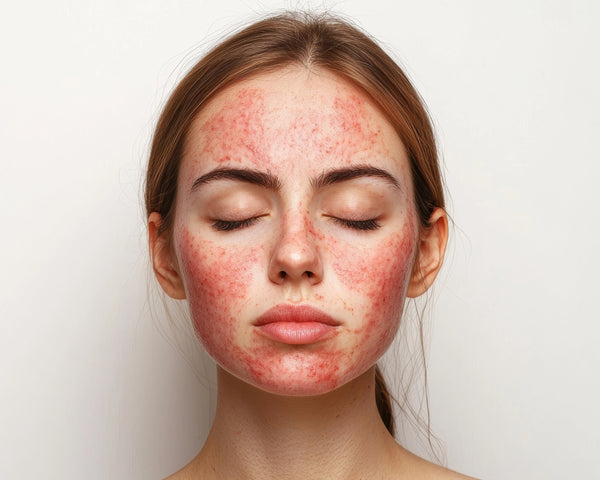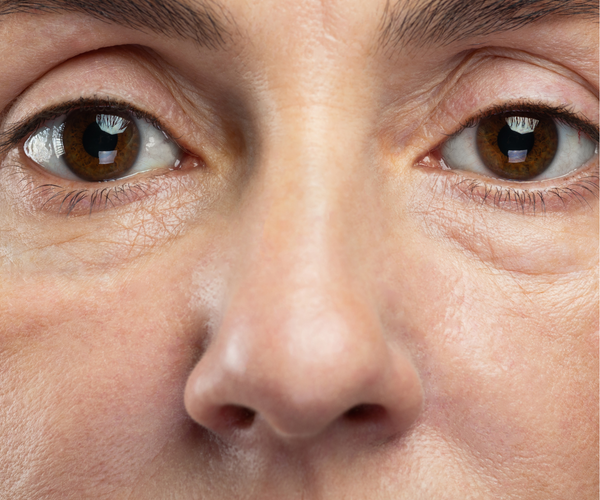Types of Acne

Acne, also known as acne vularis, is the most common skin disorder in the United States. Acne comes in many types/forms and can be categorized as mild (no inflammation), moderate (moderately inflamed with papules, pustules, and nodules), and severe (severely inflamed with mostly nodules and cysts ). Common acne is a mild form of acne that is often found on the face, chest, back, and shoulders. It generally is no real threat and can be easily treated and improve with over-the-counter products. Other types of acne include blackheads, whiteheads, papules, pustules, nodules, and cysts. Each can be treated with over-the-counter products, but may need medical attention depending on how they are categorized.
Blackheads
Blackheads are a form of comedones, skin lesions that form as a result of hair follicles being clogged with dead skin cell and oil. Blackheads get their name from the dark/black hue of the comedones shown at the opening of the skin surface. When blackheads are extracted from the skin, they are often solid, but soft to touch. It is highly recommended to use products to get rid of blackhead as oppose to picking at the skin which can lead to scarring. Exfoliating the skin (using a facial scrub or a good facial loofah), drawing the blackheads out with a good clay mask, and ensuring you are using a good 3 step system daily that includes a cleanser, toner or astringent, and a moisturizer are highly recommended in helping to keep the skin clear of blackheads.
Whiteheads
Whiteheads, like blackheads are comedones. Instead of being open at the surface of the skin, whiteheads are closed. Whiteheads are closed because the dead skin cells and oil prevent the hair follicle from opening. They often look white and pustule and are not as solid as blackheads. Picking and squeezing the whiteheads can also lead to scarring. It is highly recommended not to pick as the skin, but to use over-the-counter treatments to heal and improve them. Again, a great 3-step facial system that includes a great astringent will likely heal and rid the skin of whiteheads.
Papules
Papules are also comedones. They are small bumps, red or pink in color, on the skin that are often sensitive to touch. This is often an indication that the bumps are inflamed. Irritating the bumps further by squeezing or picking at them can lead to scarring and swelling. As with mild to moderate blackheads and whiteheads, papules can be easily treated with over-the-counter products.
Pustules
Pustules like papules are another form of inflamed comedones. They resemble a whitehead, but with a red ring surrounding the bump. The redness is caused from the inflammation. Picking at pustules can lead to scarring and dark spots. As long as there are only a few pustules visible, over-the-counter products should be able to heal and rid the skin of the pustules; however, more severe cases may require medical attention.
Nodules and Cysts
Nodules and cysts are similar in that they both form under the skin, are usually firm to touch, and are usually painful. Nodules are more firm that cysts which are filled with pus. This is one reason cysts are often mistaken for boils. Nodules and cysts should not be picked and will cause scarring and dark spots if they are picked at. Both nodules and cysts are considered a severe form of acne that often needs medical attention, but can be treated naturally with a clean diet, tons of water to flush the body, and clean skincare products, including clean masks that are known for detoxing the skin and drawing out impurities.
In Conclusion
The starting point for healing any skin issues should be to implement a daily skincare routine that consists of clean, skin-healthy ingredients that are free of chemicals and won't irritate the skin, making the problem worse. Most forms of acne can be treated with a great skincare regimen, healthy eating, and drinking lots of water. The moderate to more severe forms of acne may require attention from a dermatologist who can provide treatment to get to the root of the problem.




